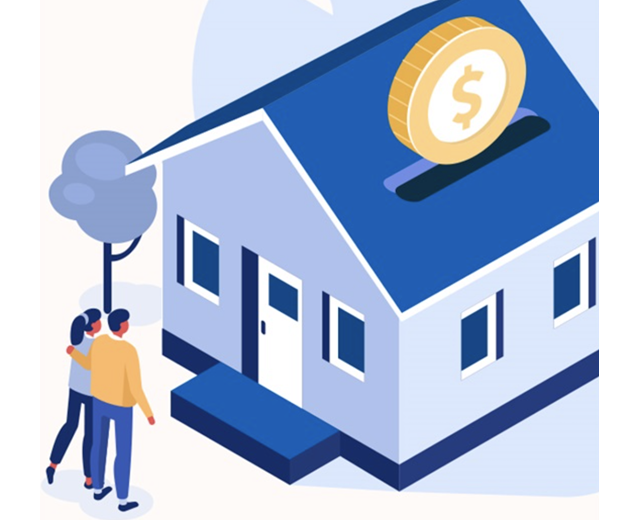Conventional Mortgage Loans: The Preferred Selection for Homebuyers
Conventional Mortgage Loans: The Preferred Selection for Homebuyers
Blog Article
The Necessary Variables to Take Into Consideration When Deciding On Between Fixed-Rate and Variable-rate Mortgage Lendings
When evaluating mortgage choices, consumers face a crucial decision in between fixed-rate and adjustable-rate fundings, each offering prospective risks and distinctive benefits. Trick factors to consider such as interest rate stability, predictability in regular monthly repayments, and the effects of prospective rate modifications can dramatically impact long-lasting monetary health and wellness. Comprehending the anticipated duration of homeownership and the general cost of borrowing can shape one's method. As these aspects link with specific economic circumstances and run the risk of resistance, the ramifications of this choice may not be as straightforward as they appear. What subtleties should be focused on in this critical decision-making procedure?
Rates Of Interest Stability
When selecting a home mortgage, understanding rate of interest rate security is critical for notified decision-making. Rate of interest prices can significantly impact the overall cost of a mortgage, and acknowledging the nature of these prices is vital for borrowers.
On the other hand, adjustable-rate home mortgages (ARMs) start with reduced initial rates that may change periodically based on market problems. While this can cause reduced settlements originally, it additionally introduces uncertainty, as debtors might deal with raised settlements if interest prices climb. For those taking into consideration an ARM, it is vital to assess the likelihood of rate adjustments, the possibility for payment increases, and the size of the first fixed-rate duration.
Eventually, the option between adjustable-rate and fixed-rate home mortgages pivots on individual risk tolerance and economic circumstances. Recognizing rate of interest stability helps consumers make educated decisions that align with their lasting monetary goals.
Monthly Settlement Predictability
While consumers usually focus on rate of interest rate stability, the predictability of regular monthly payments is just as crucial in the mortgage choice process (Conventional mortgage loans). Month-to-month repayment predictability plays an important role in budgeting and economic preparation, as it directly impacts a home owner's money flow and total monetary wellness
Fixed-rate home loans use a constant month-to-month settlement throughout the life of the financing, permitting customers to prepare for and prepare their expenses efficiently. This security can be particularly useful for novice buyers or those on a set earnings, as it eliminates the uncertainty connected with changing settlements.
On the other hand, variable-rate mortgages (ARMs) usually include reduced first repayments that can transform over time, leading to possible variability in regular monthly commitments. While initially enticing, this unpredictability can make complex financial planning, particularly if consumers do not represent future price adjustments.
Prospective Price Adjustments
In the realm of variable-rate mortgages (ARMs), prospective price adjustments stand for a significant aspect that debtors must thoroughly consider. Unlike fixed-rate home loans, where the rates of interest stays unmodified for the life of the lending, ARMs are characterized by fluctuating rates of interest that are linked to market indices. This irregularity can lead to considerable changes in monthly payments, impacting the borrower's economic planning and budgeting.
Generally, ARMs have a preliminary fixed-rate period during which the rates of interest is stable. After this period, however, the rate changes at established intervals-- commonly annually. Debtors need to be conscious of the margin and index utilized to determine these adjustments, as they straight affect future rate of interest rates. In addition, ARMs commonly consist of caps that limit just how much the rates of interest can increase at each change and over the life of the loan, which can supply some degree of security versus radical rate walks.
Understanding these potential modifications is important for borrowers, as they directly influence long-lasting payment commitments. As a result, examining individual financial situations and run the risk of tolerance is crucial when making a decision whether an ARM lines up with one's economic objectives.
Funding Term Factors To Consider
Lending term considerations play a crucial function in the decision-making process for debtors selecting in between fixed-rate and adjustable-rate mortgages. The size of the car loan term significantly influences month-to-month settlements, rates of interest, and overall financial planning. Fixed-rate home mortgages generally use terms of 15 to thirty years, offering security in regular monthly repayments and predictability in budgeting. This can be specifically appealing for debtors who plan to stay in the exact same home long-lasting and like the assurance of set payments throughout the life of the funding.

Inevitably, consumers have to examine their personal circumstances, monetary goals, and market problems when evaluating the implications of great site lending term choices within each mortgage kind.

General Price of Borrowing
Fixed-rate home loans use foreseeable monthly repayments, as the interest rate continues to be constant throughout the car loan term. This predictability can lead to lower total prices, specifically in a secure or declining interest rate atmosphere.
On the other hand, variable-rate mortgages (ARMs) commonly start with lower initial rates, leading to minimized official site ahead of time prices. Nonetheless, these prices can raise after a first duration, leading to potentially higher long-lasting prices. Consumers have to take into consideration the frequency and level of rate adjustments, along with the total loan period, to precisely examine the monetary ramifications.
Furthermore, the total cost of borrowing includes not only rate of interest yet additionally charges and other associated prices, such as shutting costs and insurance (Conventional mortgage loans). When evaluating mortgage choices, customers should perform an extensive cost evaluation over the life of the finance. By doing so, they can make an educated choice that lines up with their financial goals and risk resistance
Final Thought
To conclude, choosing between fixed-rate and adjustable-rate mortgage loans requires careful factor to consider of several crucial aspects. Rates of interest stability and month-to-month repayment predictability are paramount for efficient budgeting, while the possibility for rate modifications in ARMs introduces economic uncertainty. Furthermore, the awaited duration of homeownership and the general price of borrowing, including rates of interest and linked charges, should line up with private financial circumstances and run the risk of tolerance. Such an extensive analysis will facilitate enlightened decision-making in home loan selection.
Trick factors to consider such as interest rate stability, predictability in monthly payments, and the implications of potential rate adjustments can substantially affect long-lasting monetary wellness. Passion prices can dramatically influence the general price of a mortgage, and identifying the nature of these prices is vital for consumers. Unlike fixed-rate mortgages, where the interest price remains unmodified for the life of the lending, ARMs are characterized by rising and fall interest prices that are connected to market indices. Furthermore, ARMs often include caps that restrict check my site exactly how much the passion price can increase at each adjustment and over the life of the lending, which can give some degree of protection versus drastic price walkings.
Interest price stability and monthly settlement predictability are vital for effective budgeting, while the possibility for rate changes in ARMs presents financial unpredictability.
Report this page